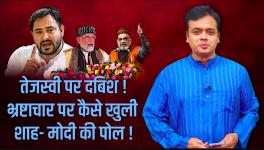Why Does Militancy Exist in A Culturally and Socially Vibrant State?

Image Courtesy: Indian Defence News
Meghalaya consists of the Garo, Jaintia, and Khasi Hills, named after the three dominant communities that inhabit these areas. Each of these communities had their own independent kingdoms prior to the arrival of the British and were thus accorded a high level of autonomy from the colonials. When Curzon partitioned Bengal in 1905, Assam, and the three hill areas were lumped as a part of East Bengal. Later in 1912, the three hill areas were brought within Assam after it was partitioned from East Bengal. The hill areas continued to remain a part of Assam as the Garo Hills, and the United Khasi and Jaintia Hills. In the 1960s due to subsequent agitation and lobbying, these two districts were partitioned from Assam to form Meghalaya. Until the creation of Meghalaya, Shillong in the Khasi Hills served as the capitol of Assam. After the partition, the capitol was shifted to Dispur.
Militancy did not appear in Meghalaya till 1992 with the creation of the Hnniewtrep Achik Liberation Council (HALC). The HALC was formed to check the influx of dkhar (outsiders) migrants into Meghalaya. The group comprised of Garos (Achiks), Khasis (Hnniewtreps) and Jaintias. Due to disagreements between the Garos and the others, the group split into the Achik Matgrik Liberation Army (AMLA) and the Hnniewtrep National Liberation Council (HNLC).
The HNLC sought to transform Meghalaya into a homeland solely for the Khasis and Jaintias and to free it from the domination of the Garos. This split along ethnic lines should come as interesting as the Garos are ethnically and linguistically distinct from the Khasis. The Khasi language is of Mon-Khmer origin, whereas the Garo language is Tibeto-Burman. The Garos also display greater similarities in their culture and practices with the Cachari and Kirati groups living in the plains of Assam to Nepal, as well as in the hills of Darjeeling, Sikkim and Nepal. The Khasis however do not. The HNLC had formed linkages with the NSCN(IM) as well as the National Liberation Front of Tripura (NLFT). It mostly operated in the Khasi Hills until the surrender of its Chairman, Julius K. Dorphang in 2007. Dorphang later became an independent MLA and has fallen from grace following a ‘sex scandal’ involving a minor.
The fortunes of the AMLA on the other hand were deeply sour. Almost as soon as it was formed, AMLA faded into oblivion being replaced with the Achik National Volunteer Council (ANVC) and the Peoples Liberation front of Meghalaya (PLFM). The PLFM consisted of mostly AMLA members who had surrendered but their rehabilitation packages had failed. The group was fairly small and was later eclipsed by the ANVC. Formed around 1995, ANVC sought the establishment of ‘Achikland’ a separate state for the Garos comprising of the Garo Hills as well as large chunks of Kamrup and Goalpara districts of Assam where the Garos reside. The ANVC was a well organised group with a defined chain of command. The ANVC had linkages with the NSCN(IM), the National Democratic Front for Bodoland (NDFB), and ULFA. In 2004, a ceasefire was signed between the Union Government and the ANVC. The ANVC has since surrendered and has entered a peace process.
Another Garo militant outfit, the Liberation of Achik Elite Force (LAEF) came up in 2005. The stated objective of the LAEF is the liberation of the Achik people. They allege that the Achik people have been discriminated against by the Khasis and Jaintias. The LAEF was formed by a former Meghalaya Police Commando, Peter Marak. He had also unsuccessfully contested as an independent candidate in a bye election from the Songsak constituency. The group has had linkages with the NSCN(IM) who had supplied them with sophisticated arms and training. Marak was arrested in Jorabat, Assam in 2007. The group has since then established links with the NSCN(K). Darong Marak, Peter Marak’s brother now heads the now inactive group.
Probably the most infamous of the militant groups in Meghalaya is the Garo National Liberation Army (GNLA). Formed in 2009 by a former DSP Champion Marak, the group unleashed a well-publicised campaign of terror. The group operated within the Garo Hills and extended its influence to the Garo inhabited areas in Kamrup and Goalpara districts of Assam. The cadre strength consists mostly of deserters from the LAEF, ANVC, and the NDFB. The GNLA had formed links with ULFA, NSCN(IM), as well as the Achik Special Dragon Party – a Bangladesh origin Garo militant group. After the arrest of Champion Sangma, the GNLA was headed by Sohan D Shira, the former commander of Williamnagar for the ANVC. On February 24, Sohan D. Shira was allegedly killed in an encounter with security forces in the Garo Hills.
A traditional view on militancy is that the reasons are economic. This has been used to explain the various ethnic movements and statehood demands across the Northeast. In the case of Meghalaya, the first group that emerged was formed to counter the demographic changes in Meghalaya. The subsequent militant groups fought for their own respective ethnic groups. The State views such groups as ‘misguided youths’, ‘gangsters’, ‘thugs’ and even ‘terrorists’. What is actually missed is that no militancy can survive without a civilian support base. Another point that is missed is about how many people within the general civilian population sympathise with the militants, or at least the objectives of the militant groups. An old demand in Meghalaya which has been resurrected by the BJP campaign is about imposing the Inner Line Permit (ILP) System. With an ILP system in place everyone who is not from the recognised communities of Meghalaya would have to apply for a permit before they can enter. It was first devised by the British in the ‘excluded areas’ to prevent disaffection among the people living in these areas. The Lushai Hills, Naga Hills, NEFA and the Chittagong Hill Tracts were all brought under the ILP system. It was continued by the Union Government after India gained independence to ‘preserve’ the tribal culture in these ‘backward’ regions. At present Arunachal Pradesh, Nagaland and Mizoram have the ILP system in place.
However, Meghalaya can not be termed ‘backward’. Meghalaya has produced parliamentarians like Purno A. Sangma, a Garo who ran for President, a former Chief Election Commissioner, J. M. Lyngdoh, a Khasi, the Shillong Chamber Choir, as well as Lajong FC to name a few. To say that the state is backward would be a grave mistake. In this regard what could be the reason for militancy and demands for ILP? The only logical conclusion one could draw is political autonomy greater than that accorded by the Constitution of India. This autonomy can be gained by instituting the ILP as it would then be within the state government’s hands whether to permit a person to enter or not, effectively a passport system within India.
Get the latest reports & analysis with people's perspective on Protests, movements & deep analytical videos, discussions of the current affairs in your Telegram app. Subscribe to NewsClick's Telegram channel & get Real-Time updates on stories, as they get published on our website.
























